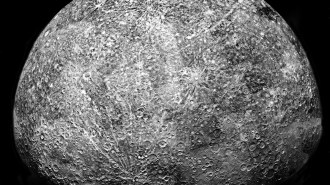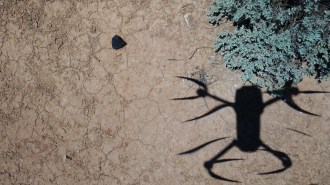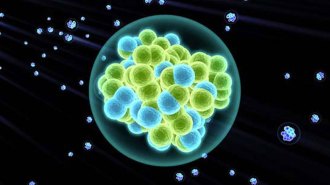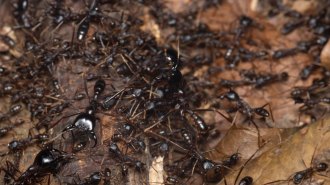Notebook
-
 Planetary Science
Planetary Science50 years ago, the first probe to visit Mercury launched
In the 1970s, NASA’s Mariner 10 became the first spacecraft to visit Mercury. Only one other probe has made the journey and another one is on its way.
-
 Climate
Climate50 years ago, scientists warned of the ‘neglected dangers’ of heat islands
In 1973, scientists knew temperatures in cities were higher than in rural areas. Now, some cities are attempting to cool down with engineering.
-
 Math
MathAn enduring Möbius strip mystery has finally been solved
Playing with paper and scissors helped one mathematician figure out just how short the twisted loops can be.
-
 Physics
Physics50 years ago, scientists dreamed of lasers that could kick off nuclear fusion
In the 1970s, lasers that could initiate nuclear fusion were a distant dream. Now, scientists are using such lasers to achieve fusion “ignition.”
-
 Astronomy
AstronomyAstronomers call for renaming the Magellanic Clouds
Explorer Ferdinand Magellan is not a fitting namesake for the pair of satellite galaxies of the Milky Way, a group of scientists argues.
-
 Planetary Science
Planetary ScienceHow drones are helping scientists find meteorites
Searching for fallen space rocks is labor intensive. A team of researchers in Australia is speeding things up with drones and machine learning.
-
 Chemistry
Chemistry50 years ago, the quest for superheavy elements was just getting started
In the 1970s, scientists were on the hunt for superheavy elements. They’ve since found more than a dozen and are searching for more.
-
 Earth
Earth50 years ago, mysterious glass hinted at Earth’s violent past
Like Hansel and Gretel followed a trail of breadcrumbs, scientists have followed tektites to the sites of major meteorite impacts.
By Demian Perry -
 Earth
Earth50 years ago, scientists thought they had found Earth’s oldest rocks
Even older rocks and minerals continue fueling debates over Earth’s crust, plate tectonics and even when life arose.
-
 Animals
AnimalsSome African birds follow nomadic ants to their next meal
Specialized interactions between birds and driver ants in Africa could help explain why the birds are especially sensitive to forest disturbances.
By Yao-Hua Law -
 Health & Medicine
Health & MedicineIron deficiency goes unnoticed in too many U.S. female adolescents
Low iron causes problems from dizziness to severe anemia. It’s time to reevaluate screening guidelines to catch the problem earlier, an expert argues.
By Skyler Ware -
 Health & Medicine
Health & Medicine50 years ago, scientists thought coffee might treat hyperactivity
Decades of follow-up research into whether caffeine can treat the symptoms of kids with ADHD has come up with more questions than answers.
By Aina Abell